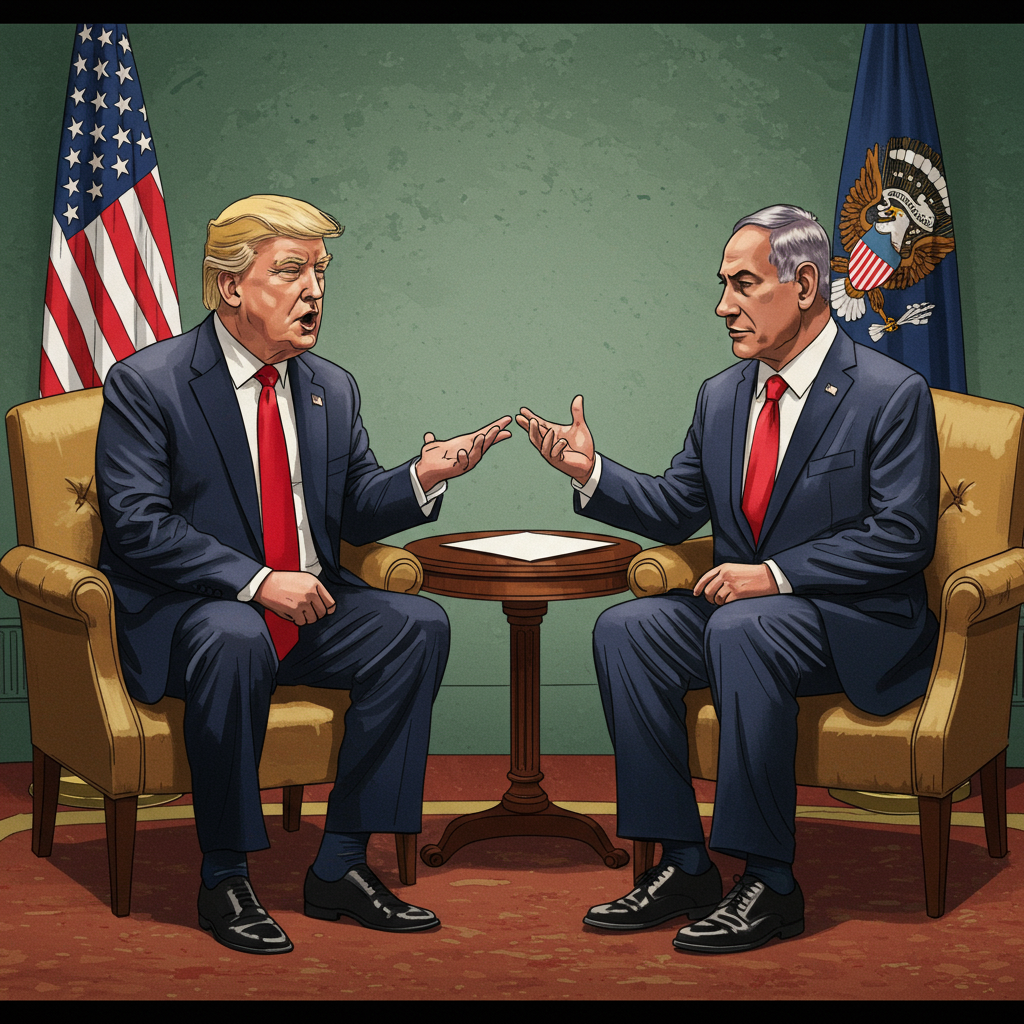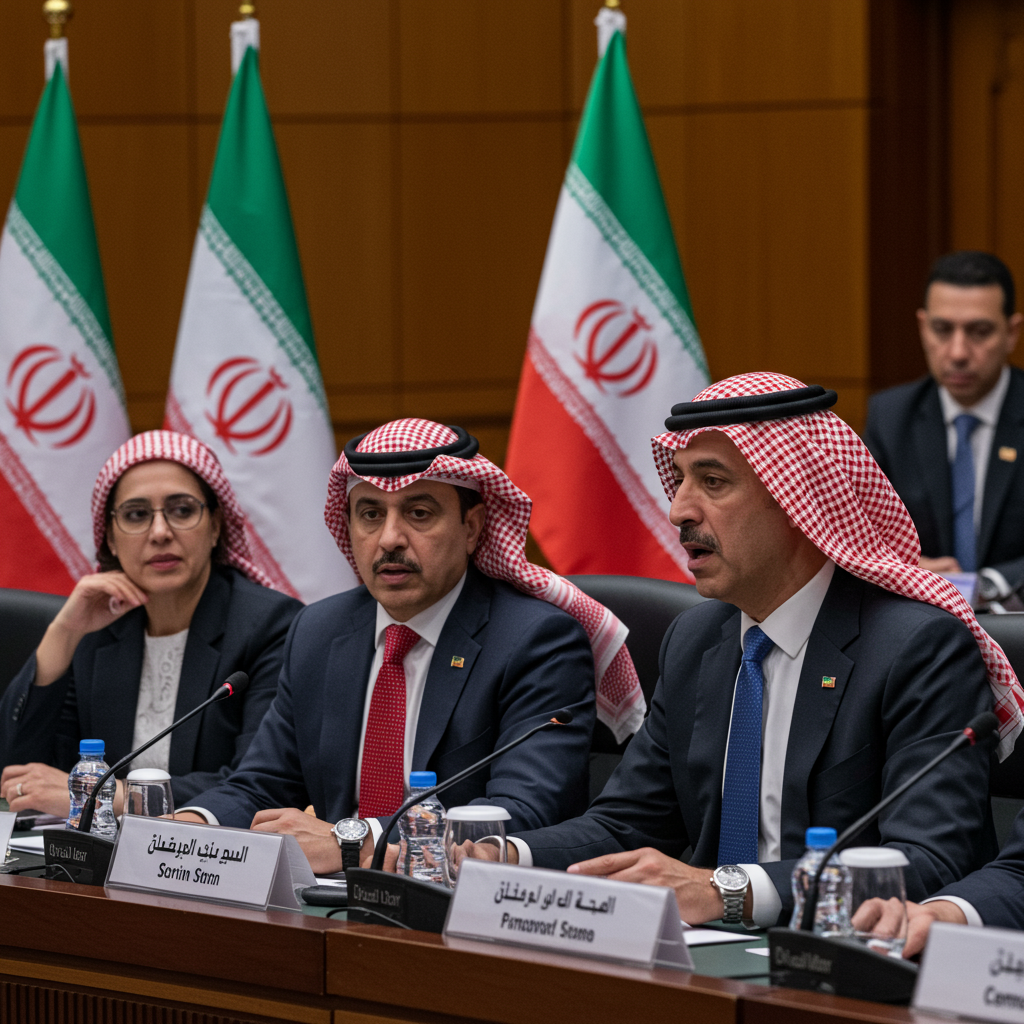In a significant development, former President Donald Trump recently met with Israeli Prime Minister Benjamin netanyahu at the White House, signaling a renewed push from the U.S. to broker a ceasefire agreement in the protracted conflict in Gaza. This high-stakes meeting occurred amidst ongoing indirect talks between Israeli and hamas negotiators, mediated by Qatar and Egypt, aimed at securing a pause in fighting and the release of hostages. Trump expressed optimism about the negotiations, stating his belief that both Hamas and Israel desire a ceasefire deal.
Pressure Mounts for a Gaza Breakthrough
The meeting between Trump and Netanyahu highlights the urgency surrounding efforts to end the devastating conflict in Gaza, now in its 21st month. Trump has actively been pressing both sides through mediators to agree to a specific proposal. This framework reportedly includes a 60-day ceasefire, a significant increase in humanitarian aid flowing into Gaza, and a phased release of hostages held by Hamas in exchange for Palestinian prisoners. Reports suggest Hamas is holding approximately 50 Israeli captives, with around 20 believed to be alive. Securing the release of these individuals and achieving a temporary halt to hostilities are primary objectives.
Why does this matter so much now? Beyond the dire humanitarian situation in Gaza, where casualties are tragically high and destruction is widespread, the conflict complicates broader regional stability and peace prospects. It has significantly increased Israel’s international isolation and stands as a major hurdle to expanding normalization agreements between Israel and Arab nations, a key component of Trump’s vision for a “remade Middle East.” A ceasefire in Gaza is widely seen by analysts as the crucial key to unlocking potential normalization deals, particularly with Saudi Arabia.
Decoding the Proposed Deal and Key Obstacles
The specific proposal circulating involves several stages over the 60-day truce. It reportedly outlines the release of 10 living hostages and the bodies of 18 deceased hostages. In return, Israel would release an unspecified number of Palestinian prisoners and conduct phased troop withdrawals from certain areas within Gaza. The United Nations and the International Committee of the Red Cross would be involved in facilitating the delivery of substantial amounts of aid to the Palestinian population.
Despite Trump’s expressed optimism that things are progressing “very well,” significant obstacles persist in reaching a final agreement. While Israel reportedly agreed to the initial U.S.-backed framework, Hamas delivered a response with amendments that Netanyahu termed “unacceptable.”
Several key demands reportedly made by Hamas present major sticking points:
Ending the Gaza Humanitarian Foundation (GHF): Hamas demands the termination of this U.S.-backed fund. Reports indicate this demand stems partly from incidents where Palestinians seeking aid at GHF sites have been killed, with suggestions of Israeli soldiers being ordered to fire on unarmed individuals. Humanitarian groups have criticized the GHF as politically motivated and a distraction from addressing the root causes of the crisis.
Military Withdrawal: Hamas seeks a return of Israeli forces to positions held before a reported ceasefire violation in March 2025. This follows extensive Israeli ground operations launched in May aimed at gaining “operational control” and establishing infrastructure like the Netzarim Corridor.
International Guarantees: Following perceived breaches of previous truces, Hamas and other Palestinian factions are demanding international assurances, particularly from the U.S., that Israeli military operations will not resume after the temporary ceasefire, even if a permanent resolution isn’t reached.
Netanyahu, on his part, maintains that the war can only end with the military defeat, surrender, disarmament, or exile of Hamas leaders – terms the group vehemently rejects. He also insists that Israel must retain sovereign security control over Gaza in any future arrangement, downplaying the prospect of a fully independent Palestinian state.
The Iran Context and Trump’s Leverage
The meeting between Trump and Netanyahu took place shortly after a major joint operation against Iranian nuclear facilities, which both leaders hailed as a “historic victory.” This coordinated action appears to have strengthened the relationship between the two leaders, creating a dynamic reportedly more aligned than in previous encounters.
This backdrop of recent military cooperation is seen as potentially providing Trump with increased leverage over Netanyahu regarding the Gaza ceasefire. Trump has a stated desire to be recognized as a peacemaker and was formally nominated for the Nobel Peace Prize by Netanyahu during the visit, citing Trump’s efforts in “forging peace.” This long-held ambition for a Nobel Prize may further motivate Trump’s push for a breakthrough in Gaza.
Experts suggest that given the significant U.S. support demonstrated by the joint strikes on Iran and Trump’s historical backing for Netanyahu, including past calls to potentially intervene in Netanyahu’s corruption trial, Trump may feel Netanyahu is obligated to comply with his wishes on ending the Gaza conflict. Trump himself stated he would be “very firm” with Netanyahu on the issue.
Broader Regional Implications and Domestic Pressures
Beyond the immediate goal of a ceasefire and hostage release, the discussions tie into Trump’s larger regional aspirations, including the expansion of the Abraham Accords. Talks potentially touched upon normalizing relations with Syria under new leadership, seen as feasible due to reduced Iranian and Hezbollah influence. The ultimate prize remains normalization with Saudi Arabia, which analysts believe is contingent on significant progress in resolving the Israeli-Palestinian conflict, starting with an end to the Gaza war.
However, Netanyahu faces significant domestic political challenges. His far-right coalition partners, whose support is essential for his government’s survival, strongly oppose ending the war or making concessions on issues like humanitarian aid. Ministers Bezalel Smotrich and Itamar Ben-Gvir have publicly advocated for intensified operations and restrictive aid policies. Balancing the pressure from Washington with the demands of his political base presents a delicate tightrope walk for Netanyahu. Despite tempering expectations for a final* deal during his visit, Israeli officials suggested Trump might issue a public statement indicating the sides are “very close” to an agreement, reflecting ongoing efforts.
The dire humanitarian situation for Palestinians remains a critical focus, with continued casualties reported in Gaza and ongoing challenges in the occupied West Bank, including violence, home demolitions, and restrictions on movement. While Palestinians in Gaza are reportedly desperate for the attacks to cease, the fundamental disagreements over the war’s conclusion and Israel’s post-war role in Gaza continue to pose substantial hurdles to achieving a durable peace.
Frequently Asked Questions
What is the specific ceasefire proposal being discussed for Gaza?
The current U.S.-backed framework reportedly proposes a 60-day ceasefire in Gaza. During this period, hostilities would pause, humanitarian aid would significantly increase, and Hamas would release 10 living Israeli hostages and the bodies of 18 deceased hostages. In exchange, Israel would release an unspecified number of Palestinian prisoners and conduct phased withdrawals from specific areas within Gaza. The UN and ICRC are expected to assist with aid distribution.
Why is former President Trump actively pushing for a Gaza ceasefire deal now?
Trump’s push for a Gaza ceasefire is driven by multiple factors. He aims to be recognized as a peacemaker, potentially securing a Nobel Peace Prize nomination, which Netanyahu formally presented during the meeting. The Gaza conflict is also a major obstacle to his broader vision of expanding regional normalization deals like the Abraham Accords. The recent successful joint action against Iran may provide him with increased leverage over Netanyahu, whom he is reportedly pressuring to end the conflict which is causing immense casualties and isolating Israel internationally.
What are the main obstacles preventing Israel and Hamas from reaching a ceasefire agreement?
Key obstacles include fundamental disagreements over the war’s end and specific terms. Hamas demands the termination of the U.S.-backed Gaza Humanitarian Foundation, a return of Israeli forces to earlier positions, and international guarantees against the resumption of military operations. Israel, led by Netanyahu, insists the war will end only with Hamas’s defeat and requires maintaining sovereign security control over Gaza, which Hamas opposes. Netanyahu also faces domestic political pressure from far-right coalition partners who oppose ending the conflict.



